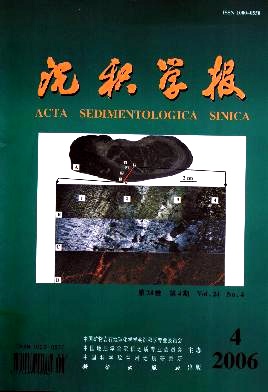Over-pressured Fluid Compartment and Hydrocarbon Migration and Accumulation in Dongying Depression
- Received Date: 2005-11-11
- Rev Recd Date: 2006-01-08
- Publish Date: 2006-08-10
-
Key words:
- Dongying depression /
- compartment /
- over-pressure /
- dynamics /
- episodic hydrocarbon-expulsion /
- hydrocarbon migration
Abstract: Rapid and continuous deposition and large thickness, as well as high heat flow, high geotherm and high content of organic matters characterize source rocks in Dongying depression. Large thickness of mudstones are developed in the main source rock intervals (3rd and 4th of Shahejie Formation). Source rocks are mainly deposited in the forms mudstone inlaid with sandstone, sandstone enclosed within mudstone and pure mudstones. As a result, over pressured systems are well developed in the main source rock intervals, and episodic expulsion becomes the fundamental mode of hydrocarbon expulsion in Dongying depression. The over-pressured systems form over-pressured fluid compartments (OPC) in vary levels that control the hydrocarbon migration and accumulation. The compartments could be divided into three parts according to the geochemical characteristics: the edge of compartment (seal), which hold up the hydrocarbon migration to outside; the favorable releasing zone for hydrocarbon, in which over-pressure was released to some degree and hydrocarbon was expelled efficiently; the stagnant zone for hydrocarbon, in which the over-pressure remains and the hydrocarbon is stagnant relatively. The episodic hydrocarbon-expulsion can be classified as “tectonic episode” and “pressure episode” based on the different mechanisms. The mechanism of “tectonic episode” is a destruction caused by tectonic activities, and hydrocarbons migrate along fault planes, while the mechanism of “pressure episode” is the accumulation and release of the “residual energy” in the over pressured systems, and hydrocarbons migrate along microfissures induced from fracturing. Episodic hydrocarbon-expulsion of OPC has important significance in petroleum exploration in Dongying depression, due to its characteristics of high energy and rapid migration.With the exception of the stagnant fluid dynamics system, there are two kinds of fluid dynamic systems in Dongying depression: normal-pressured open fluid dynamics system and OPC fluid dynamics system, which results in two accumulation dynamic mechanisms: one was self-sourced and sealed dynamic mechanism, another was outward-sourced and opened mechanism. OPC is moving and changing at all times, so all the geological behaviors should be investigated by historical and developmental eye.
| Citation: | Over-pressured Fluid Compartment and Hydrocarbon Migration and Accumulation in Dongying Depression[J]. Acta Sedimentologica Sinica, 2006, 24(4): 607-615. |






 DownLoad:
DownLoad: